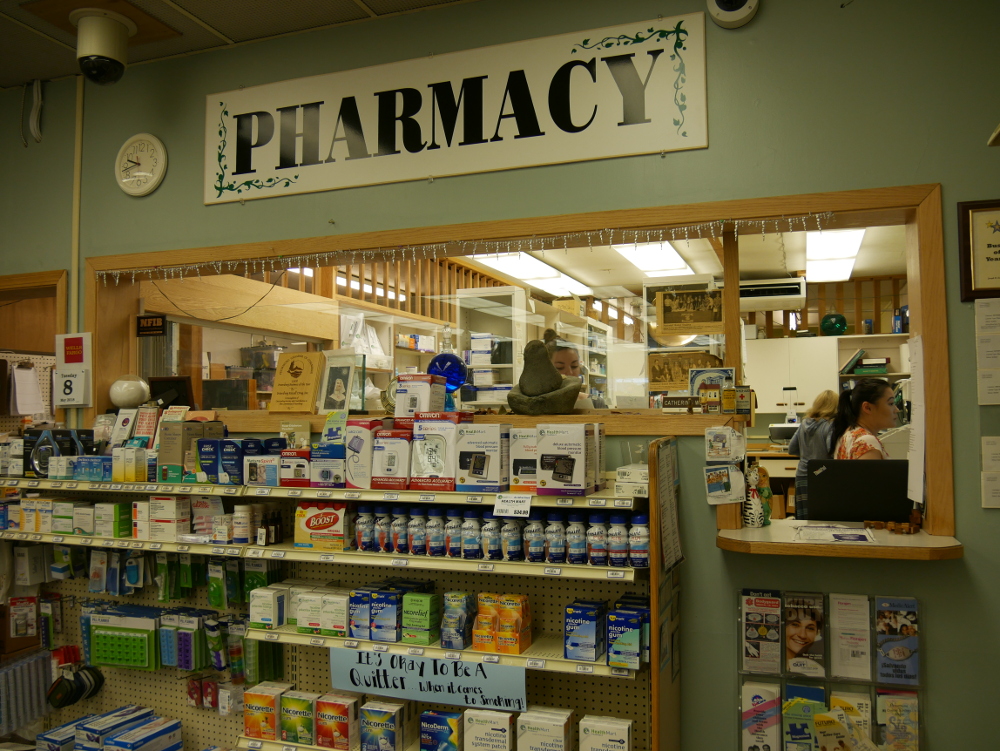
Alaska continues to see staffing shortages at pharmacies, made worse by the pandemic, but also due to conditions affecting the state more broadly.
It’s evidenced by reduced hours at retail pharmacies and longer wait times to get prescriptions filled, and, on the flip side, newly graduated pharmacists getting offered huge sign-on bonuses and student loan repayment because they’re in such high demand.
State Pharmacist Dr. Coleman Cutchins, who also spends time teaching pharmacy students at the University of Alaska Anchorage, says the shortage is not a new problem in Alaska, but the coronavirus pandemic exacerbated some underlying issues.
Listen:
[Sign up for Alaska Public Media’s daily newsletter to get our top stories delivered to your inbox.]
The following transcript has been lightly edited for clarity.
Coleman Cutchins: Around the nation, there were a lot of people that left the health care workforce. Most of them were kind of toward the end, you know, they could have retired years ago, they kind of stayed in it. So we saw — you know, physicians, nurses, pharmacists — we saw a lot of medical professionals retire or leave clinical care and go on to something else. My theory on it, and what I’ve actually seen through some of my former students and residents up here is that opened up positions in other places gave people opportunities that they wouldn’t have had, without, you know, without COVID. So the pharmacists, who I feel like are exceptional that, you know, I trained, that I worked with, have left — all left for a better opportunity somewhere else, or a similar opportunity somewhere with lower cost of living, or similar opportunity closer to family, because they have young kids. I don’t think it was anything really specific about Alaska during the pandemic, but I think it was more that a lot of opportunities opened up other places, so people could go, you know, if they felt inclined or had a reason to. Does that makes sense?
Casey Grove: Yeah. And maybe not even just specific to being a pharmacist. You see that across a lot of demographics. That out-migration is a real thing. What kind of specific things happened during the COVID pandemic do you think contributed to pharmacists, you know, leaving their jobs?
CC: I’ve talked to a lot of people that work in the community. I don’t think it was a direct contributor. Now, the other piece of the puzzle here that I think was directly affected during the pandemic were pharmacy technicians. It isn’t just pharmacist staffing shortages that are impacting retail pharmacies across the state. More so, the people that I talked to that work in the community setting say it’s technicians, because, you know, your technicians are your ancillary workforce. They make it run. You can’t run without them. I mean, in most staffing models, you’re looking at two to three technicians per pharmacist. So if there’s no technicians, you’re still going to have to limit hours. So the problem with technician shortages is, I mean, community pharmacy is a high stress environment. There was stress, there was anxiety there, you know, during COVID. And there’s a lot of other jobs they can do for the same amount of money. Unfortunately, you know, the pay scale isn’t anywhere close, kind of like we see with a lot of other paraprofessionals. And, you know, they just have other options that pay the same or similar and don’t have a lot of those those stressors that we see in the healthcare sector.
CG: I guess, whether it’s technicians or pharmacists in that retail setting, you mentioned it can be kind of stressful. And I think something that we have seen through the COVID pandemic is, you know, some negativity directed at those frontline workers, I think it’s fair to say that they are. And do you think that that’s maybe part of it, too?
CC: You know, if I hadn’t talked to a bunch of people that work in those settings, I probably would have said, “Yeah, that probably plays a part of it.” But honestly, I mean, of all of the people I talked to, none of them mentioned that as a motivating factor. So I would hear anecdotal reports about, “Oh, this pharmacy, you know, they’re getting hostility around vaccines when they’ve never had hostility around vaccines.” I mean, yeah, that probably did happen. But I didn’t hear anyone, in the preparation for this, talk about, you know, public hostility being a reason why they feel like they can’t staff.
CG: Just working in a retail setting of any kind, maybe, is stressful.
CC: Yeah. Yeah, maybe. And community pharmacy is stressful, and then it gets even more stressful when you’re shortstaffed. Because when you short your hours, you can have the same amount of work, it’s just going to be in a shorter time period. So I think it kind of compounds that stress level.
CG: How often are you in a classroom teaching pharmacy students?
CC: More this fall, in this semester? But I’ve always made it a point to be really involved in pharmacy education, and I’m a lecturer for the College of Pharmacy. I’m there quite a bit.
CG: So do you see young people in those classes that are eager to get out there and help people? And I’m, like, imagining them with the white lab coat, raising their hand for every question. But, I mean, do you see that?
CC: I do. And I always have. I’ve been involved in pharmacist education my whole career, and in either in the classroom setting or in the practice setting. Because your fourth year of your Pharm D (Doctor of Pharmacy) program is all clinical rotations. So you’re rotating through various practice sites, kind of like on-the-job learning, on-the-job training. So yeah, at this point it’s their life, it’s their profession. You know, at this point, if they’re not eager, maybe they should have made a different choice in life. So hopefully they made those choices before they signed up.
CG: Yeah, definitely. Are they wearing the white lab coats though?
CC: Yeah, for the College of Pharmacy, they have a White Coat Ceremony where they get their white coat when they enter their first year and are ushered into being student pharmacists at that point.
CG: That’s so cute or something.
CC: But I’ll tell you, I don’t know that I’ve ever worn a white coat in practice. I don’t think I ever have.
Casey Grove is host of Alaska News Nightly, a general assignment reporter and an editor at Alaska Public Media. Reach him at cgrove@alaskapublic.org. Read more about Casey here.





